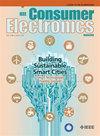生成式人工智能通过时空自适应扩散学习实现脑电图超分辨率
IF 4.3
2区 计算机科学
Q1 ENGINEERING, ELECTRICAL & ELECTRONIC
引用次数: 0
摘要
脑电图(EEG)技术,特别是高密度脑电图(HD EEG)设备,在神经科学等领域有着广泛的应用。高清脑电图设备通过在头皮上放置更多电极,提高了脑电图的空间分辨率,满足癫痫病灶定位等临床诊断应用的要求。然而,这种技术面临着挑战,比如高昂的获取成本和有限的使用场景。本文提出了时空自适应扩散模型(STAD),率先使用扩散模型实现从低分辨率(LR, 64通道或更少)脑电到高分辨率(HR, 256通道)脑电的空间SR重建。具体来说,设计了一个时空条件模块来提取LR脑电的时空特征,然后将其作为条件输入来指导反向去噪过程。此外,构建了一个多尺度Transformer去噪模块,利用多尺度卷积块和基于交叉注意的扩散Transformer块进行条件引导,生成被试自适应SR脑电。实验结果表明,STAD显著提高了LR脑电的空间分辨率,在定量上优于现有方法。此外,通过将合成SR脑电应用于分类和源定位任务,STAD显示了它们的价值,表明它们有可能大幅提高脑电的空间分辨率。本文章由计算机程序翻译,如有差异,请以英文原文为准。
Generative AI Enables EEG Super-Resolution via Spatio-Temporal Adaptive Diffusion Learning
Electroencephalogram (EEG) technology, particularly high-density EEG (HD EEG) devices, are widely used in fields such as neuroscience. HD EEG devices improve the spatial resolution of EEG by placing more electrodes on the scalp, which meet the requirements of clinical diagnostic applications such as epilepsy focus localization. However, this technique faces challenges, such as high acquisition costs and limited usage scenarios. In this paper, spatio-temporal adaptive diffusion models (STAD) are proposed to pioneer the use of diffusion models for achieving spatial SR reconstruction from low-resolution (LR, 64 channels or fewer) EEG to high-resolution (HR, 256 channels) EEG. Specifically, a spatio-temporal condition module is designed to extract the spatio-temporal features of LR EEG, which then used as conditional inputs to direct the reverse denoising process. Additionally, a multi-scale Transformer denoising module is constructed to leverage multi-scale convolution blocks and cross-attention-based diffusion Transformer blocks for conditional guidance to generate subject-adaptive SR EEG. Experimental results demonstrate that the STAD significantly enhances the spatial resolution of LR EEG and quantitatively outperforms existing methods. Furthermore, STAD demonstrate their value by applying synthetic SR EEG to classification and source localization tasks, indicating their potential to Substantially boost the spatial resolution of EEG.
求助全文
通过发布文献求助,成功后即可免费获取论文全文。
去求助
来源期刊
CiteScore
7.70
自引率
9.30%
发文量
59
审稿时长
3.3 months
期刊介绍:
The main focus for the IEEE Transactions on Consumer Electronics is the engineering and research aspects of the theory, design, construction, manufacture or end use of mass market electronics, systems, software and services for consumers.

 求助内容:
求助内容: 应助结果提醒方式:
应助结果提醒方式:


